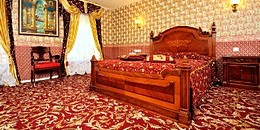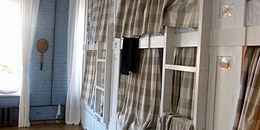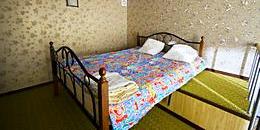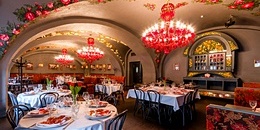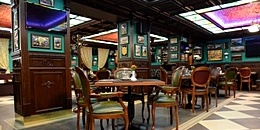Rumyantsev Mansion
This magnificent mansion on Angliyskaya Naberezhnaya (the "English Embankment") was owned at the start of the 19th century by Count Nikolay Rumyantsev, a patron of the arts and passionate collector. He laid the foundations for Russia's first public museum, amassing in his home a formidable collection of Russian antiquities, including paintings, old books, acts of state, seals, etc. His collections formed the basis for the Moscow Public Museum and the Rumyantsev Museum. Now, the restored interiors of his former mansion house exhibits of the Museum of the History of St. Petersburg.
The first stone house on this site was built in the 1740s for Grand Duke Mikhail Golitsyn. In 1802, the house was acquired by Nikolay Rumyantsev, son of Ekaterina Golitsyna and the famous military commander Pyotr Rumyantsev-Zadunayskiy, an obelisk commemorating the victories of whom is situated in a garden on the opposite bank of the Neva River. The younger Count Rumyantsev entrusted the reconstruction of his property to Vasiliy Glinka. The architect retained the proportions of the original building, but completely changed the appearance of the facade, which he decorated with a massive 12-column portico. On the pediment he added an alto-relievo of Apollo on Parnassus surrounded by the Nine Muses and their mother Mnemosyne. The representations nearby of attributes of science and art were symbolic of the interests of the owner of the house. For his work on the building, Glinka was awarded the title of Academician of the Academy of Arts.
The house became a genuine centre of sciences and temple of the muses. Rumyantsev amassed a rich collection of texts, coins, medals, and ornaments. Of particular value was the library of 28 500 books, including the works of Russian scientists from the 18th and early 19th centuries, Russian chronicles, and the journals of Russian travelers. More than 13 000 volumes were in foreign languages. The master of the house occupied three rooms overlooking the Neva, and all other parts of the house were home to his priceless treasures. Historians, linguists, and archivists worked constantly in the house. Alongside research work, the mansion became a venue for lectures, readings and concerts.

After the death of the count, his younger brother Sergey Rumyantsev continued his work to establish the first privately owned museum in Russia. It was opened to the public in 1831, and entrance was free-of-charge for all. However, in 1861, due to the lack of museums in Moscow and despite the protests of Petersburgers, the museum's collections were transferred to the Pashkov House on Ulitsa Neglinka in the old capital.
The Rumyantsev Mansion changed hands several times, and was altered by architect Alexander Stepanov. He was responsible for the state rooms that can be seen today - the Oak Study, the White Hall, and the Concert Hall. At the beginning of the 20th century, the Rumyantsev Mansion passed into the hands of Grand-Duke Lev Kochubey, son-in-law of the Duke of Leuchtenberg. In 1938, the mansion was gifted to the Museum of the History and Development of Leningrad, which until then had been housed in the Anichkov Palace. Restoration of the state rooms was carried out in 2003. Now home to a branch of the Museum of the History of St. Petersburg the mansion also hosts classical concerts on Sunday evenings.
| Address: | 44, Angliyskaya Naberezhnaya |
|---|---|
| Metro: | Admiralteyskaya, Vasileostrovskaya |
| Getting there: | From Admiralteyskaya Metro Station (or anywhere further east on Nevsky Prospekt) take buses 22 or 27, or trolley bus 5, to Ploshchad Truda (three stops), walk to the river and turn left along the embankment. From Vasileostrovskaya Metro Station, take a 62, 144, 154, 249, or 386 marshrutka minibus, also to Ploshchad Truda. |
| What's nearby? | Neva River, Ploshchad Truda, Nikolaevskiy Palace, Palace of Grand Duke Mikhail Alexandrovich, English Church of Jesus Christ, Blagoveshchenskiy Bridge |



